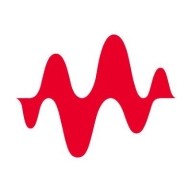

Splunk Observability Cloud and Ixia Hawkeye compete in IT performance monitoring and analysis. Splunk Observability Cloud seems to have the upper hand in terms of pricing and customer support, while Ixia Hawkeye is a preferred choice for feature-rich offerings.
Features: Splunk Observability Cloud offers comprehensive real-time monitoring, analytics-driven insights, and extensive integration capabilities. In comparison, Ixia Hawkeye excels in network performance monitoring, traffic analysis, and innovative performance validation features.
Room for Improvement: Splunk Observability Cloud could enhance its feature set to match competitors with specialized network capabilities. It may also improve integration flexibility with complex network systems. Additionally, enhancing the user interface for ease of navigation could be beneficial. Ixia Hawkeye may benefit from simplifying its deployment process. Improvements in cost-effectiveness could attract a broader customer base, and expanding its customer support options could enhance user satisfaction.
Ease of Deployment and Customer Service: Splunk Observability Cloud facilitates streamlined deployment with strong support services, making implementation efficient. Ixia Hawkeye, despite its rich features, requires a more complex deployment, which may necessitate extra effort. Splunk's customer service is noted for its accessibility and fast problem resolution.
Pricing and ROI: Splunk Observability Cloud is considered cost-effective and offers a good ROI through scalable solutions and lower setup costs. Ixia Hawkeye, although associated with higher initial expenses, provides significant value for extensive network analysis, justifying its investment through long-term benefits.
| Product | Market Share (%) |
|---|---|
| Splunk Observability Cloud | 1.2% |
| Ixia Hawkeye | 0.3% |
| Other | 98.5% |


| Company Size | Count |
|---|---|
| Small Business | 20 |
| Midsize Enterprise | 10 |
| Large Enterprise | 43 |
Splunk Observability Cloud offers sophisticated log searching, data integration, and customizable dashboards. With rapid deployment and ease of use, this cloud service enhances monitoring capabilities across IT infrastructures for comprehensive end-to-end visibility.
Focused on enhancing performance management and security, Splunk Observability Cloud supports environments through its data visualization and analysis tools. Users appreciate its robust application performance monitoring and troubleshooting insights. However, improvements in integrations, interface customization, scalability, and automation are needed. Users find value in its capabilities for infrastructure and network monitoring, as well as log analytics, albeit cost considerations and better documentation are desired. Enhancements in real-time monitoring and network protection are also noted as areas for development.
What are the key features?In industries, Splunk Observability Cloud is implemented for security management by analyzing logs from detection systems, offering real-time alerts and troubleshooting for cloud-native applications. It is leveraged for machine data analysis, improving infrastructure visibility and supporting network and application performance management efforts.
We monitor all Network Monitoring Software reviews to prevent fraudulent reviews and keep review quality high. We do not post reviews by company employees or direct competitors. We validate each review for authenticity via cross-reference with LinkedIn, and personal follow-up with the reviewer when necessary.